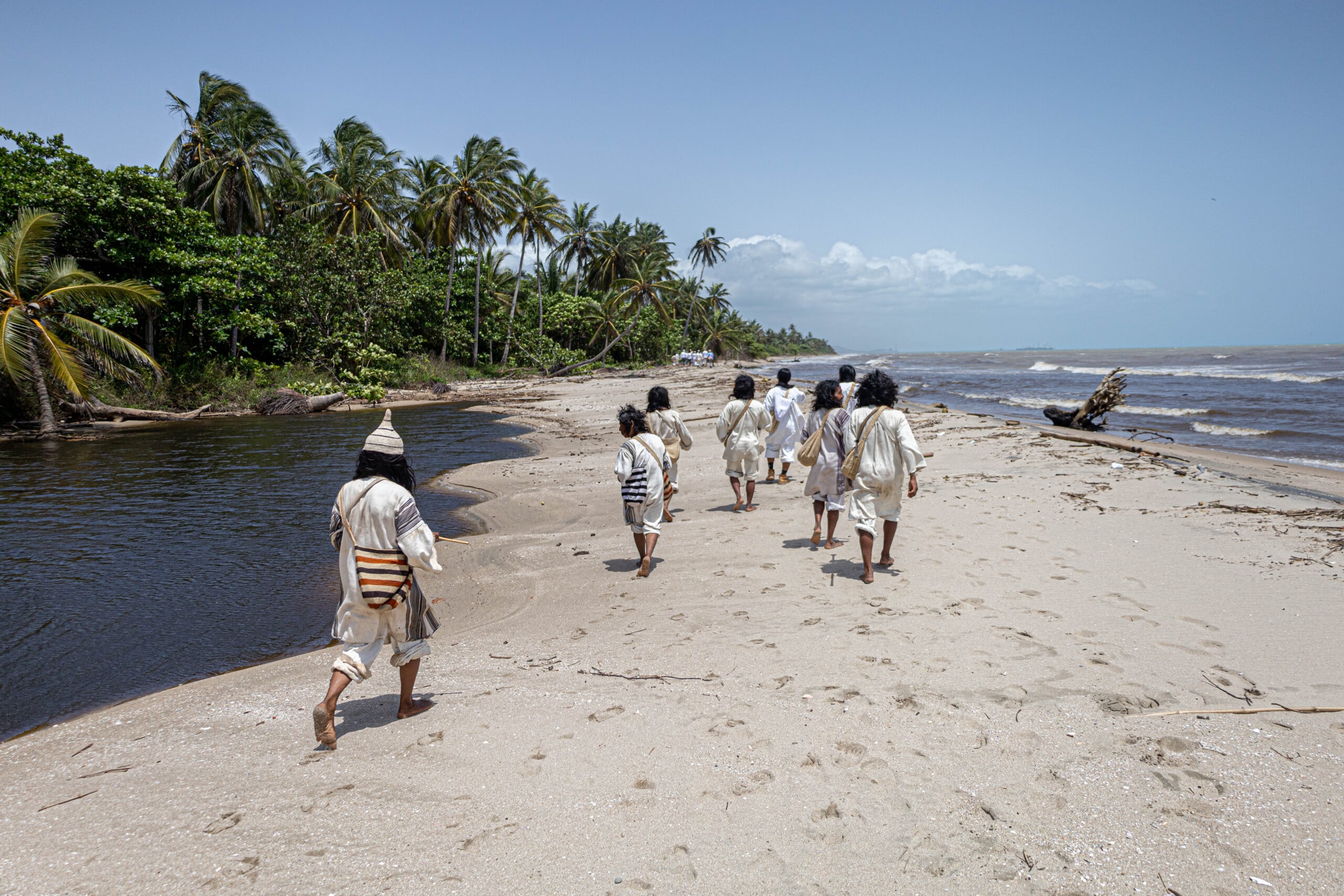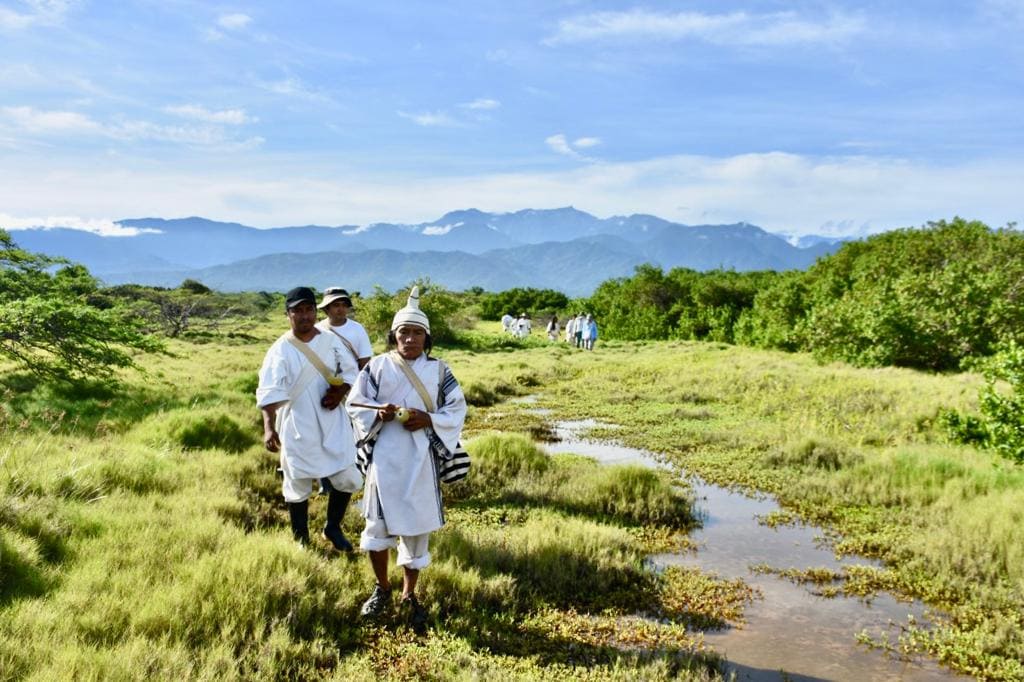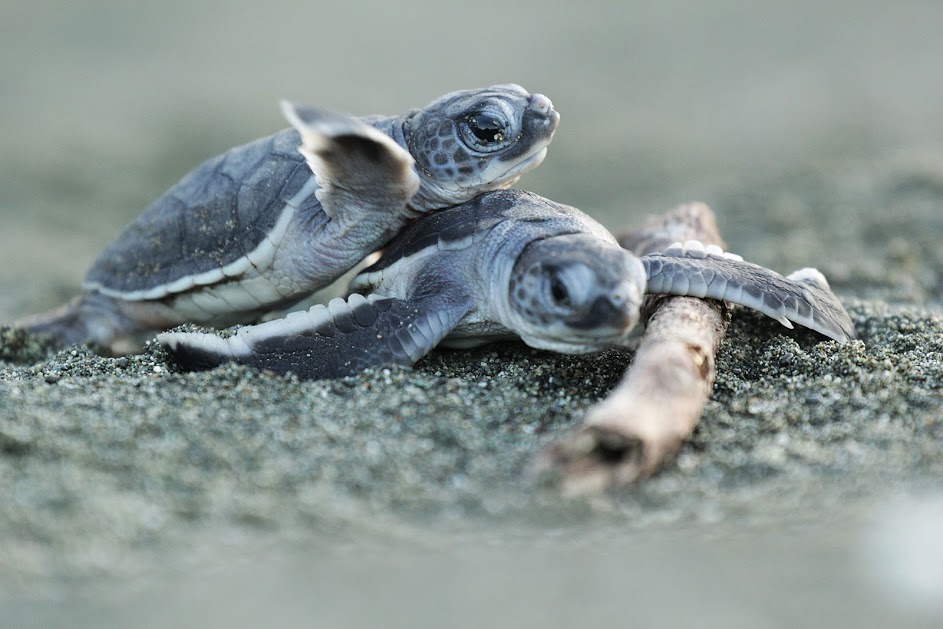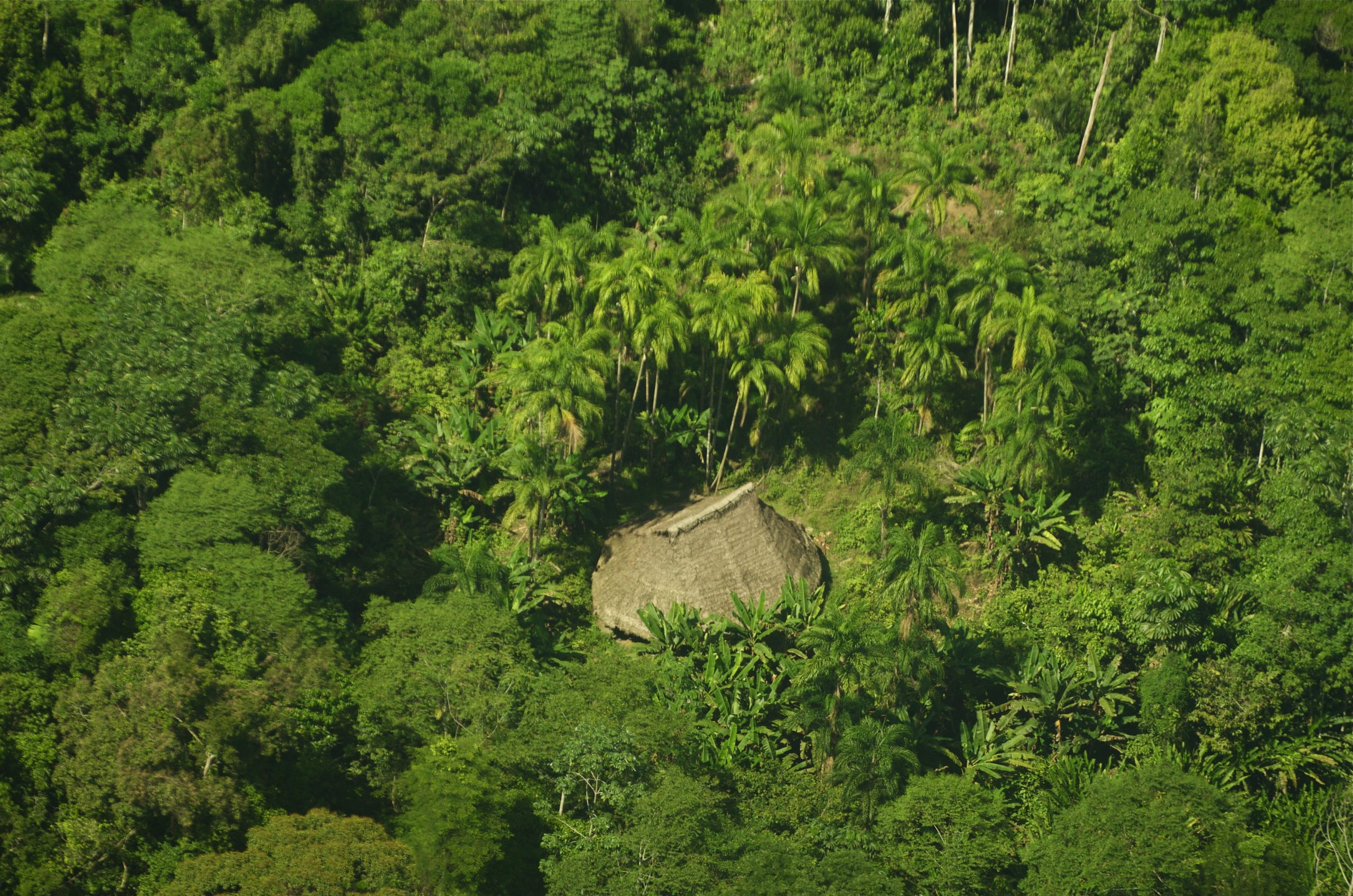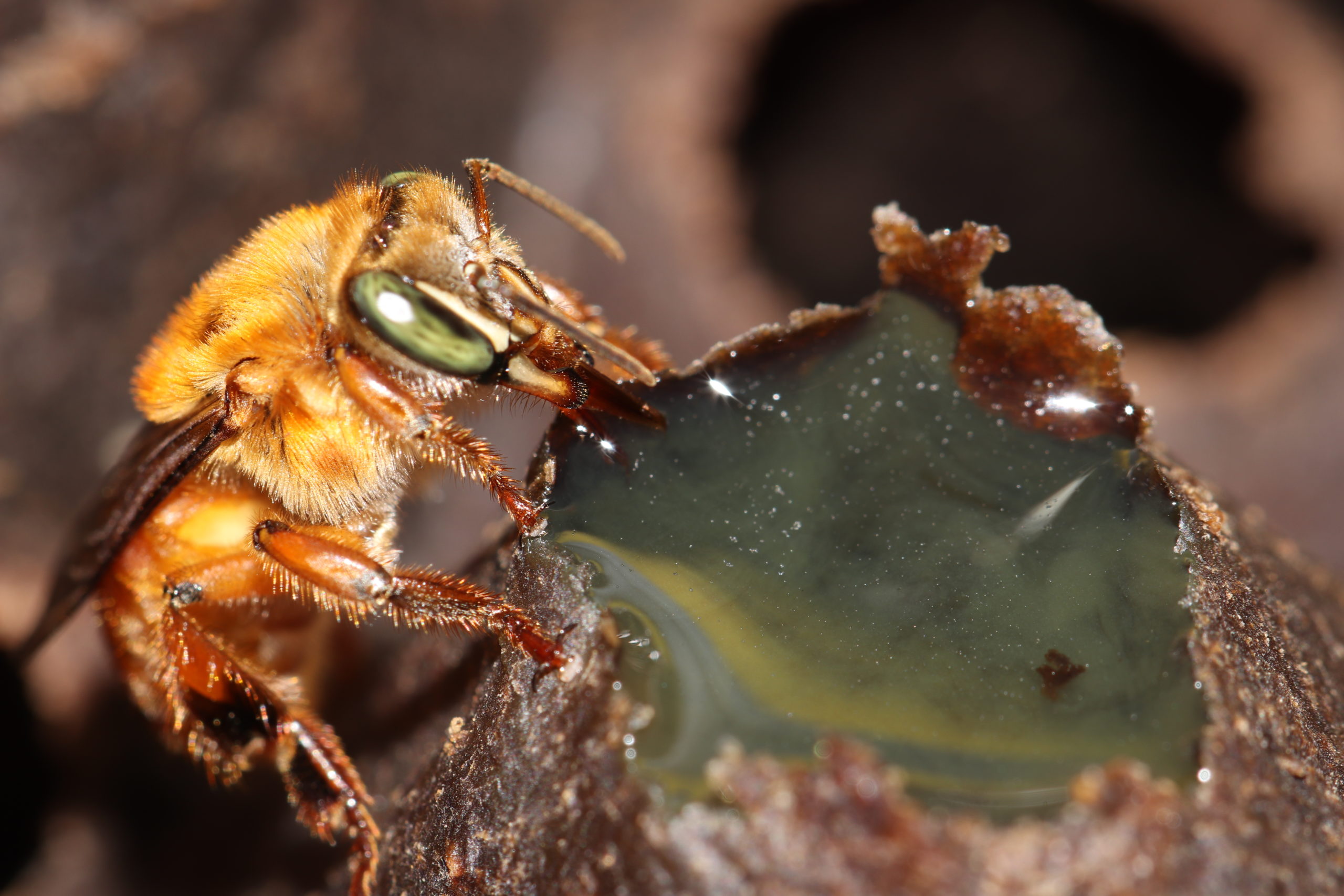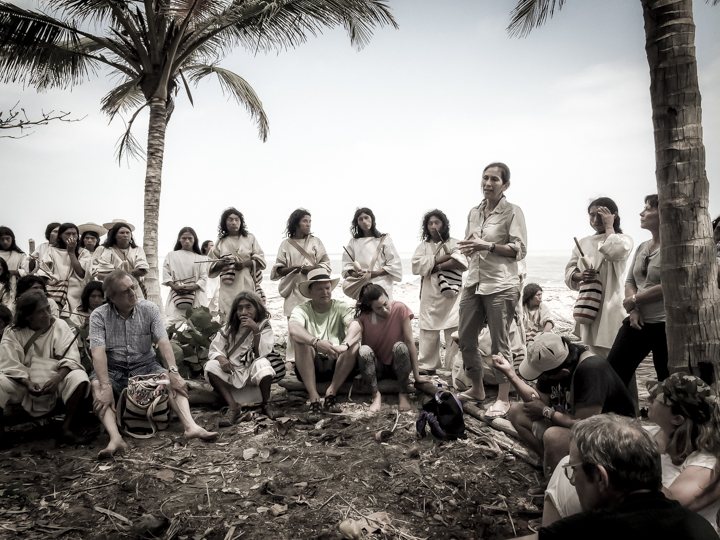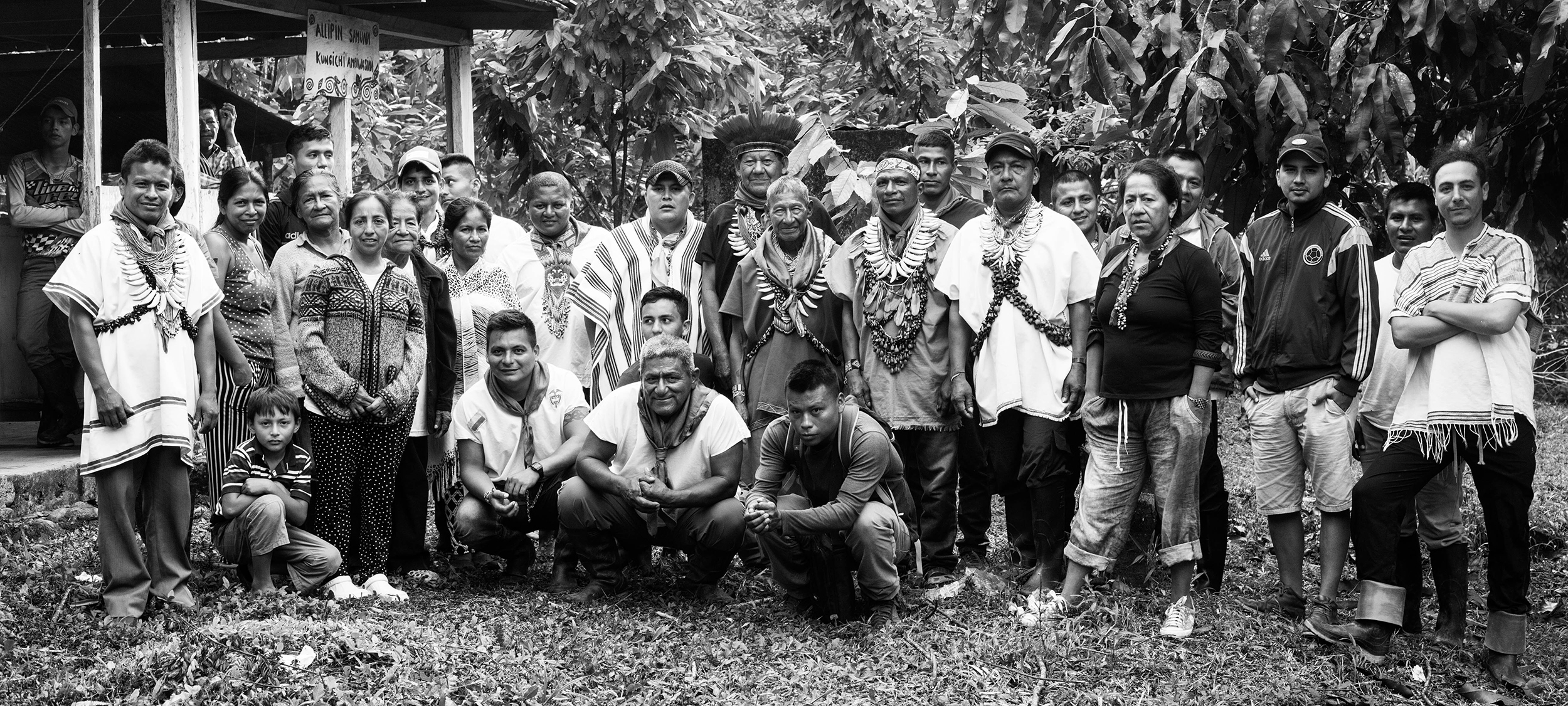Posts Tagged ‘Conservation’
Biocultural restoration at Jaba Tañiwashkaka
Understand how the Kogui people reclaimed access to the sea and restored nature at a coastal sacred site through our new blog about Jaba Tañiwashkaka.
Read MoreColombian National Land Agency formalizes fourth expansion of the Kogui-Malayo-Arhuaco Indigenous Reserve
The KMA reserve is inhabited by three of the four peoples of the Sierra Nevada de Santa Marta: the Wiwa people (Malayo or Arzario), Kággaba (Kogui) and Ikᵾ (Arhuaco), with jurisdiction in the departments of Magdalena, Cesar and La Guajira. 3,575 indigenous families benefit from the 213 new hectares, which are allocated to cultural and environmental protection and recovery between the upper and lower areas of the Sierra Nevada de Santa Marta, increasing the area of the reserve to just over 407,839 hectares.
Read MoreCombating Illegal Gold Mining in the Amazon Rainforest With Maxar’s High-Resolution Satellite Imagery
TORTUGAS PRECIOSAS DE OSA
Tortugas Preciosas de Osa has released 32,219 baby turtles of three different species, reduced predation and nest theft by 60%, and established a baseline of the biology and ecology of these species in danger of extinction in one of the most biodiverse places in the world. As if that were not enough, during this time we have discovered that this location is one of the most important for hawksbill turtle nesting in the Pacific region of Central America.
Read MoreTortugas Preciosas de Osa: Saving the Sea Turtles of the Osa Peninsula
Tortugas Preciosas de Osa has released 32,219 baby turtles of three different species, reduced predation and nest theft by 60%, and established a baseline of the biology and ecology of these species in danger of extinction in one of the most biodiverse places in the world. As if that were not enough, during this time we have discovered that this location is one of the most important for hawksbill turtle nesting in the Pacific region of Central America.
Read MorePueblos Indígenas en Aislamiento o Estado Natural en Colombia: Una historia reciente de los retos para su protección
Since the end of the 19th and beginning of the 20th century, there were rumors from rubber and animal skin traders about the presence of peoples who took shelter deep in the adjoining forests. These are peoples who avoid all forms of contact with the surrounding society.
Read MoreIndigenous Peoples in Isolation in Colombia: A recent history of the challenges involved in their protection
Since the end of the 19th and beginning of the 20th century, there were rumors from rubber and animal skin traders about the presence of peoples who took shelter deep in the adjoining forests. These are peoples who avoid all forms of contact with the surrounding society.
Read MoreThe Healing Bees of the Amazon Forest
Ancient human societies were not the first to discover the power of plants for healing: for millions of years, bees have used botanical resin exudates—known as propolis—to control the proliferation of microorganisms in their nests. These Amazonian bees possess innate knowledge of medicinal plants. By collecting resin from different trees and plants, they produce one of the first medicine cocktail of animals’ societies, known as propolis. ACT has been strengthening the communities living in the Amazon forest in order to sustainably harvest this product.
Read More25 Years Ago: Why We Founded the Amazon Conservation Team
Liliana Madrigal, ACT co-founder, recounts what inspired her to leave the world of conventional environmental conservation and create a new and innovative conservation organization that works for and with the indigenous peoples of critical ecosystems in the Amazon.
Read MoreThe House of the Sun: The Story of the Alto Fragua Indi Wasi National Park
An unprecedented story in global conservation processes. A story of the courage of the Inga people, almost two decades after the declaration of the creation of the Alto Fragua Indi Wasi protected area.
Read More

